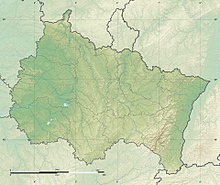| Battle of Spicheren | |||||||
|---|---|---|---|---|---|---|---|
| Part of the Franco-Prussian War | |||||||
"Bataille de Forbach" by Jean-Adolphe Bocquin after Jules Férat | |||||||
| |||||||
| Belligerents | |||||||
|
| |||||||
| Commanders and leaders | |||||||
|
|
| ||||||
| Strength | |||||||
| 37,000[1][a] | 29,000[1] | ||||||
| Casualties and losses | |||||||
|
843 killed 3,656 wounded 372 captured[1] |
1,982 killed or wounded 2,096 captured[1] | ||||||
Grand Est Region | |||||||
The Battle of Spicheren, also known as the Battle of Forbach, was a battle during the Franco-Prussian War. The German victory compelled the French to withdraw to the defenses of Metz. The Battle of Spicheren, on 6 August, was the second of three critical French defeats. General (later field marshal) Helmuth von Moltke had originally planned to keep Bazaine's army on the Saar river until he could attack it with the 2nd Army in front and the 1st Army on its left flank, while the 3rd Army closed towards the rear. The aging General von Steinmetz made an overzealous, unplanned move, leading the 1st Army south from his position on the Moselle. He moved straight toward the town of Spicheren, cutting off Prince Frederick Charles from his forward cavalry units in the process.

Cite error: There are <ref group=lower-alpha> tags or {{efn}} templates on this page, but the references will not show without a {{reflist|group=lower-alpha}} template or {{notelist}} template (see the help page).

